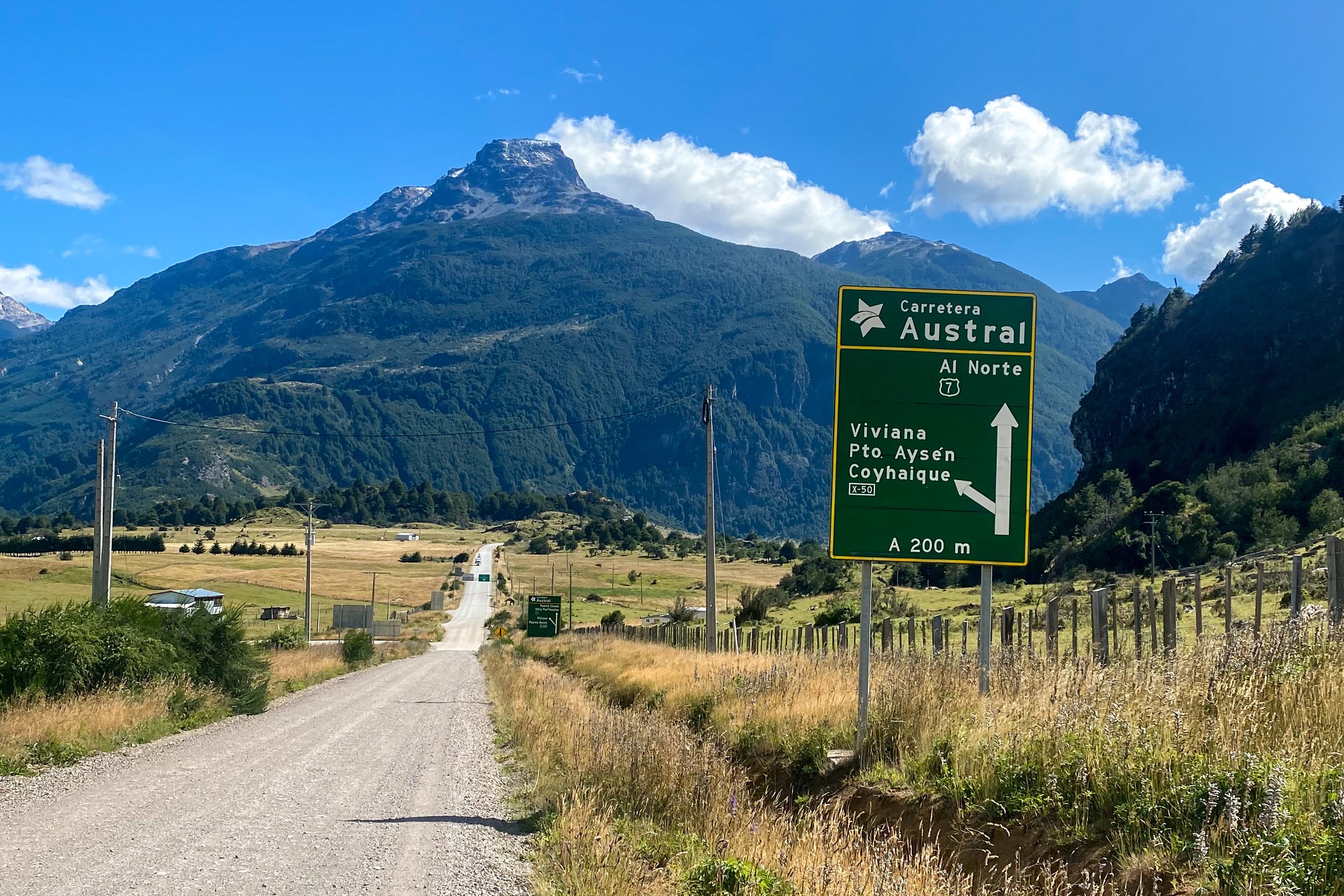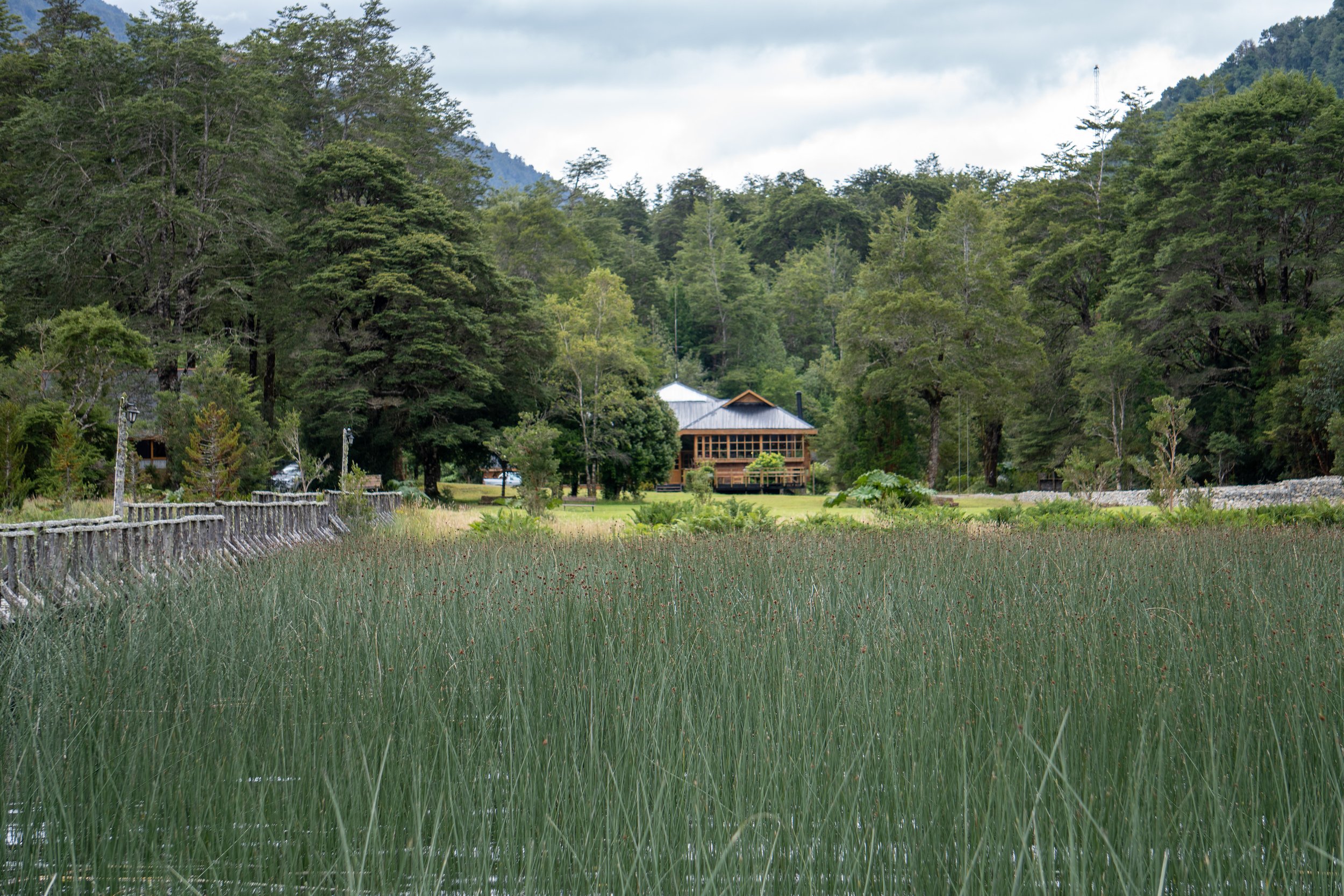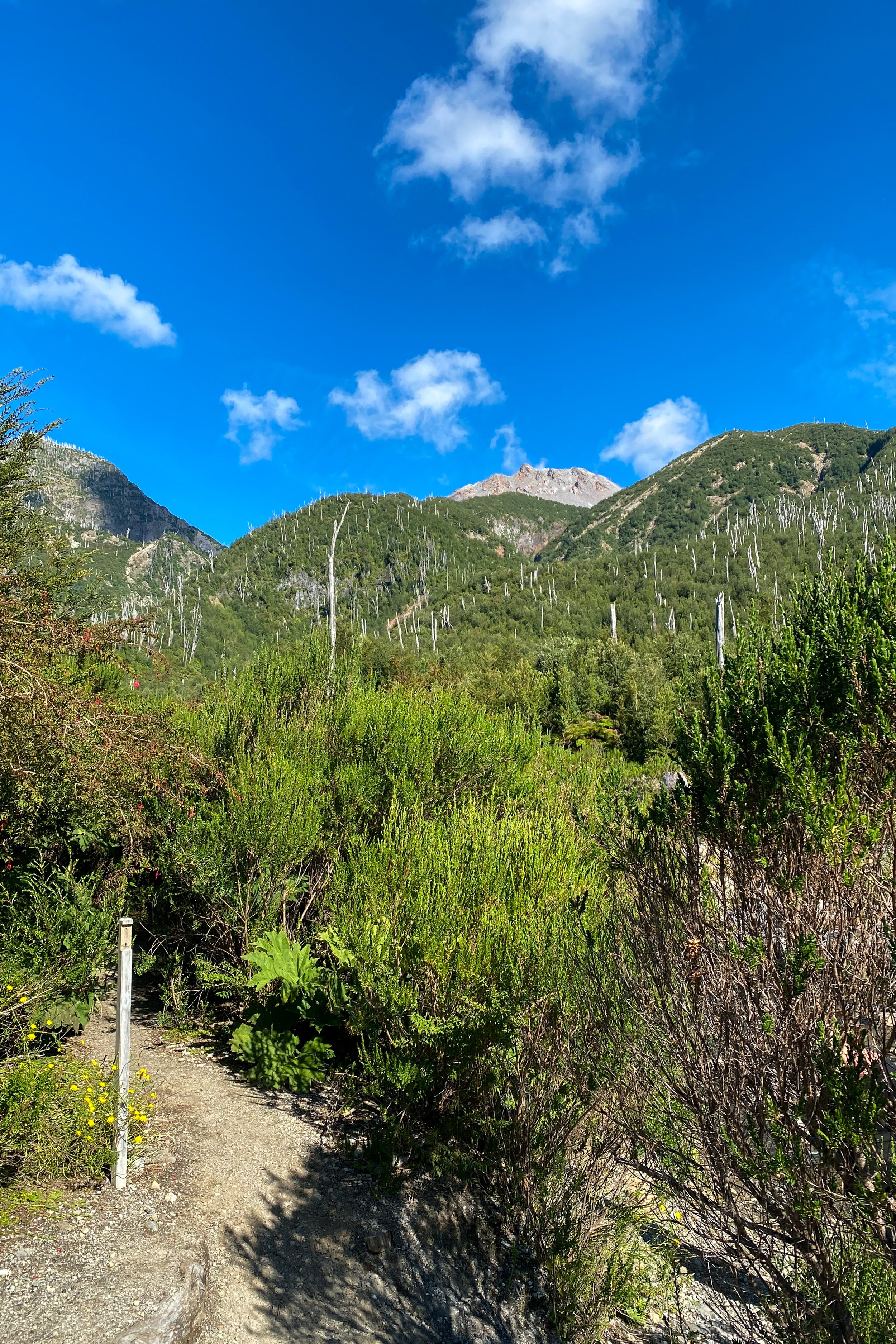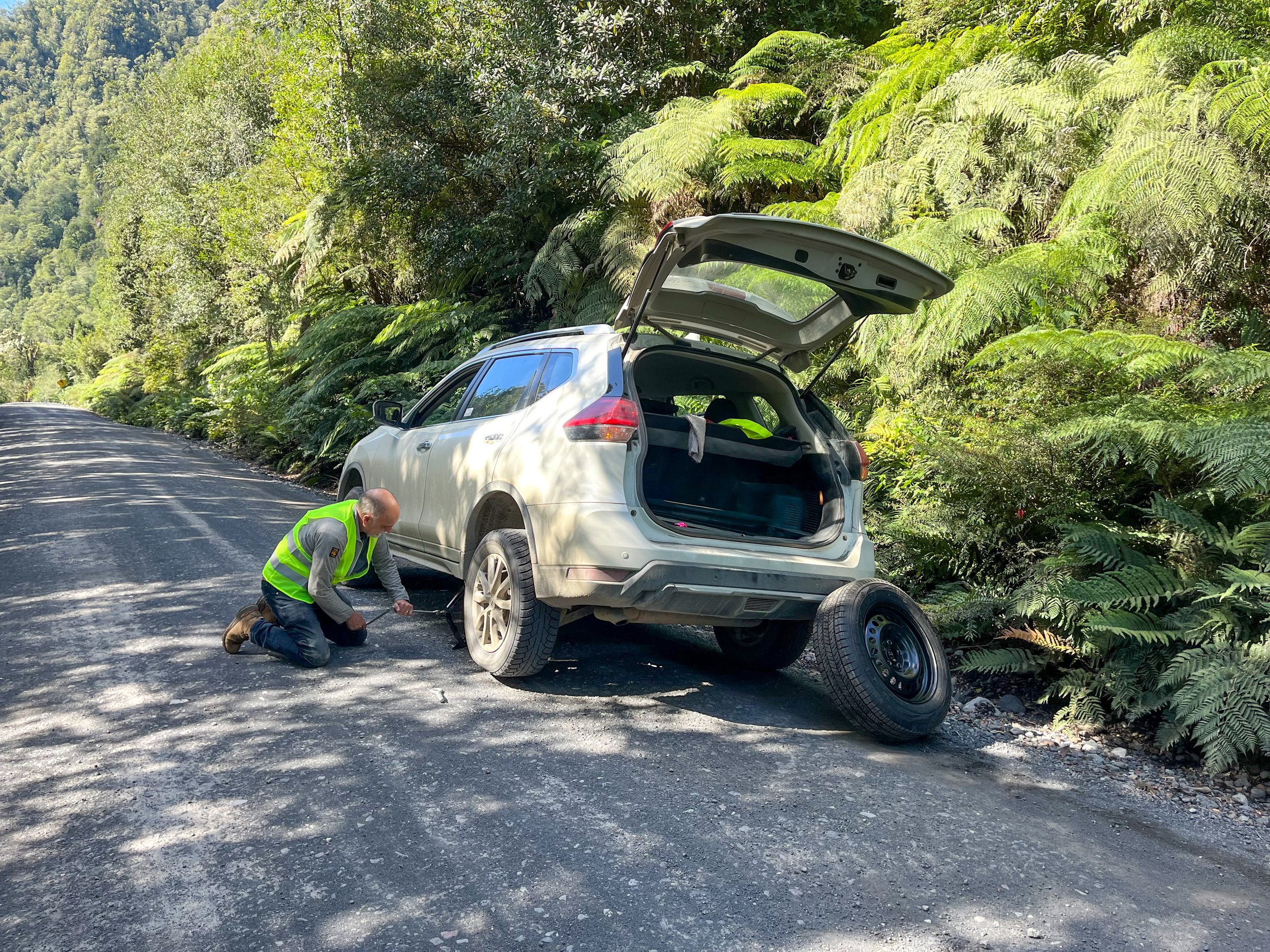Carretera Austral
Days 33 - 43 11th to 21st February
Whether or not the Carretera Austral lives up to its billing as being one of the most spectacular drives on the planet is difficult to judge if you haven’t driven that many of the world’s great highways but, having now driven this one, we can attest to it being spectacularly long, an incredible feat of engineering and human endeavour cut through one of the most beautiful and remote landscapes that we have ever seen. The experience engenders a wide range of extreme emotions from hugely rewarding visual joy to abject misery at the frustratingly tedious and uncomfortable driving on surfaces that anywhere else would be deemed impassable.
The urge to undertake such a trip surely comes from a basic need for exploration and trying to capture the pioneering spirit of those people that first undertook it as well as to complete a journey from point A to B whatever that might entail. Once started, the journey becomes the adventure as much as the places that you see upon it and the measure of difficulty feels intrinsically linked to the mark of achievement and enjoyment that you award it. In other words, If it were too easy then that would generate complacency leading to a sense of shortfall in accomplishment and you may as well have taken a drive from London to Birmingham in the rain in rush hour: a long boring drive with only the Bull Ring to look at the end!
The route is traditionally run from north to south but we travelled in the other direction from Cochrane and chasing the illusive heat of summer and the promise of civilisation at the end of our journey in Puerto Varas. (Frustratingly, our guide book is written for those travelling in the traditional direction which makes it pretty hard to follow)
———
Whatever way you look at this route, it satisfies every definition of wonderment that exists in any lexicon. Not least of these is the history of its development which is still an unfinished story of sharply contrasting opinion and debate.
Early colonisation
Right up until the end of the 19th Century, the whole vast region of Southern Chile was only home to a bunch of nomadic tribesman who, for 10,000 years or so, had been wandering around waving spears at Guancos, running away from Pumas and making hand prints in caves. The last thing that they were interested in was getting anywhere else and they were probably blissfully unaware that a bunch of other nomadic tribesman who had invented ships, guns and how to ride horses had given them the name of ‘big feet’ (Patagones ) but would have no doubt been pleased to know that their part of the world had been written off as ‘too difficult’ and ‘just miles and miles of lakes, forest and big mountains with snow on’.
Even the early pioneers settling from Germany didn’t make much of an impact and the small developments near Puerto Montt and Coyhaique were no more than remote outposts that had better connections back to Argentina than the rest of Chile.
Interest in the region’s potential was spiked by the German geographer Hans Steffen Huffman’s book about the area of Aysén was published after his explorations of 1899 but even then, it was not until the land giveaway from 1929 onwards by Chilean President Carlos Ibáñez del Campo that settlers really started to make their mark.
Puyuhuapi
A group of young Sudeten Germans had enthusiastically read Hans Steffen’s book and decided to start a settlement in Puyuhuapi in 1932 in order to escape the rising inter war tension at home. They gave up their German citizenship for free land under the Chilean flag and settled in an unknown area with no farming or construction experience. Things went badly for the first years with failures in cattle herds and an over indulgence in pigs being family pets not for butchering but by the early 1940s things had settled down.
In 1943, a British ship was sent to the small cooperative village in search of Nazi spies following some intercepted radio communications. However, when it became obvious that there were no German soldiers or submarines and when it was discovered that the locals like climbing mountains for exercise rather than for the purpose of building radio masts, the British captain invited everyone for dinner on board the frigate by way of an apology. The navy took a dim view of this and promptly stripped the British commander of his rank.
The descendants of the original settlers still live in the village where the Hopperdietzel artisan beer is now considered to be the best thing since Bratwurst.
Hotel Pangue. As ever, it seems, our hotel was outside of town. This one in a beautiful park setting was 18km outside of Puyuhuapi which meant a half hour drive to get anything other than the basic food available here. The place was built in 1987 and seems to have no work done on it since! The weather was good during our three night stay in the middle of our trip on RP7 though and gave us a good chance to relax.
———
As the number of small farmsteads and hamlets began to grow, there were some efforts to create better land links but engineering roads into the steep cliffs at the edges of the many fjords in the region was difficult, time consuming and expensive. For these reasons, the southern third of the country that crosses more lines of latitude than almost any other remained isolated for many decades into 20th Century. (Brazil is longest at 39° followed by Russia at 36.5° then Chile at 36.4° but when you look at the width of Chile, it makes it a pretty unique country for communication networks)
If you have a tent in these parts you are likely to end up pitching it in a kind of bus shelter affair which are ever present in the gardens of hostelries. If you’re going up market then you stay in a cabaña which roughly translates as ‘garden shed’. Now don’t get me wrong, garden sheds can be really nice especially if they are insulated, have a comfy bed and some form of heating. Integrated toilets and showers are something else that you might hope for if you are planning to stay the night in one. The cabañas that we stay in often had at least some of the features listed above but seldom all but then some nights we have been so exhausted after a hard day playing pothole bullseye that we really don’t care. Sometimes a large quantity of vino tinto consumed very quickly is the most important thing on our minds. This was our room in Cochrane and the fire was very welcome.
As for the decor, shiny pine cladding that in the uk has been out of date for over 50 years is all the rage and why not? There is plenty of driftwood lying around wherever you go. The wood that isn’t used for building is used to burn. No other fuel is considered for the job of heating and the small towns that we pass through and stay at all share the familiarity of smelling like bonfires.
Frequent sections of roadworks demonstrate at least that progress on the road is ongoing albeit slowly! When you arrive at this scene it is a lottery as to how long it will be before the lolly pop twister will flip to the green ‘siga’ side. Could be two minutes, could be thirty. It’s a tough job but someone has to do it!
———
Pinochet (1973-1990)
Remembered as someone that was all good or all bad, General Augusto Pinochet came to power in 1973 after the US backed Coup d’état saw the end of Salvador Allende who had been the first Marxist president in history to be elected by general election.
Pinochet’s regime was infamous for plenty of bad stuff like attaching electrodes to the testicles of left wing poets (🤔sounds familiar) and the Caravan of Death and now the whole subject of his sixteen and a half year reign is taboo for most. It is even harder to find anyone saying anything positive about him out loud but universally, their is a grudging recognition that what he did in building Ruta 7 was a pretty big achievement.
Various hypotheses circulate about the motives that Pinochet had for putting so much store by this project ranging from; a genuine intent to unit a disparate region with the rest of the country; wanting to make sure that there was a means to keep the Argies out; giving his trucker mates a means to transport the rainforest lumber to make a shit ton of money or just a way of keeping his army fit by using them to build it. Whatever the reasons, the facts around the construction make it one of the biggest pieces of engineering work undertaken in South America in the 20th century.
The road is generally single track with bridges that seem impossibly narrow. A bit challenging when you meet a bus or truck coming in the opposite direction.
Some bridges are more impressive than others but still only wide enough for one vehicle at a time. You have to tIme your run carefully as there is no directional priority. Size and how beaten up your vehicle is wins the day and if you come face to face with a smouldering heap of a lorry, you back up!
———
The atrocities of Pinochet’s regime were less prevalent in the south and, certainly by the older generation, respect for the ‘good’ Pinochet still holds firm. (Let’s not forget that he was good mates with Thatcher and, in latter years gained the support of none other than the Archbishop of Canterbury and the Pope when he was accused by the Spanish of torture and murder of their citizens. Makes you wonder how many steps apart one right wing fascist organisation is from another…)
If you ignore a few tricky bits at either extreme, by the time that he was ousted from power in 1989, Pinochet’s Highway of some 1240km was pretty much complete with 3km of bridges, 4 million cubic metres of rubble removed and 8 million cubic metres of rock blasted using 0.5 million tonnes of explosive. The undertaking had used the labour of over 10,000 conscripted soldiers and cost an estimated US$300m plus 30 odd years of inflation.
The road though was entirely made up of a gravel surface which, with the volatile Patagonia weather together with heavy usage, quickly wears away.
The long and winding road
It’s a good thing that the journey is as important as the places that we visit because mostly they are uninspiring one Guanaco affairs that have gradually enlarged from their frontier outpost foundations. Most started in convenient locations next to lakes for water access to the outside world and, when the road came, expanded in grid layouts back up the hill. None are older than a hundred years and they all still have the feeling of the Wild West even if everyone now has cell phones instead of pistols. Everyone knows everyone else and, without exception, are all very welcoming to the gringos that have made it to their neck of the Andes. The tiniest effort at communicating in Spanish is warmly received but is never equal to English that everyone seems to have a good command of. Ah! The power of Netflix!
Bearing the names of a forgotten language of the Tehuelche tribe, a series of towns and hamlets before Puyhuaipi came and went without much remark: Cochrane where the annual festival was a good excuse for drunkenness and eating lamb that had been crucified in front of burning logs.
And the most bizarre supermarket. ‘I’ve got the bear and bread love. Did you pick up the cement mixer?’
Coyhaique best seen when driving away from it and notable only for a weird pentagon shaped central plaza. And Tranquilla which wasn’t. The poor weather that greeted us in Cochrane stayed with us for four days and this, combined with truly awful road surfaces, dampened our mood considerably. We had long periods of silence in the car. We both wanted it done with.
Puyuhuapi was the fillip that we needed though and meeting up with the friends that we had made on the Roald Amundsen buoyed our spirits for the last section of the route.
———
1990 - 2023
Although enthusiasm for the road waned somewhat in the years after Pinochet, between the early 1990s and today more bridges have been built and replaced where needed and large sections of road have now been paved.
Our guide book which was published in 2016 claims that all work on paving roads was due to be complete by 2018. Having now driven the road from Cochrane to Puerto Montt, we can vouch for the fact that this deadline was well and truly missed. Whilst there are plenty of road works evident and still being carried out by military services who are clearly enjoying themselves with explosives and very big trucks, perhaps 2040 or 2050 or never might be more realistic dates for completion.
Signs on this Immaculate section of paved road near Chaitén helpfully point out that there may be falling rocks. Not really sure what you are supposed to do to avoid them though…
The active volcano at Chaitén near the northern end of the route last erupted in 2008 covering the town in ash. There are over 2000 volcanoes along this section of the Andes with around 100 still active. Another challenge for the road builders.
An aerial view of the town showing the extent of damage
———
The future and the tricky bits to the north
The big issue about the Carretera Austral has always been about what it is actually for and was the whole effort really worth the environmental damage that it has brought to this distinctly separate and remote part of the planet. Certainly the indigenous tribes that have now all but been wiped out would have preferred it if everyone had listened to the Spanish dismissal of the region and from a conservationist standpoint, ‘it’s hard to destroy wilderness without roads’. The beauty and awesomeness of this region has, like in pretty much every other country, been caught up the myth of human progress with overgrazing, deforestation, mining and industrial fish farming all being a direct result of the road’s construction.
Evidence of cleared pastures are on show all along the route
———
Had Pinochet stayed in power for another decade, the complete integration of industrialised annihilation would, by now, probably be complete but in the 1990s along came a man who with his family succeeded in bringing a sense check to proceedings and to this day his foundation continues to foil the plans of those that would carry on blasting: Douglas Rainsford Tompkins. Born in Ohio 1943 and died in Coyhaique 2015, he first became famous and very very rich for forming (and selling) clothing brands The North Face and Esprit. He divorced his first wife in 1989 and then hitched up with his second; Kris who had been former CEO of the Patagonia clothing brand. Disillusioned with the commercialisation and the environmental damage being caused by globalisation of the fashion industry, they pitched their combined wealth into a conservationist project that, at one moment, made them the largest private land owners in the world.
From the early 1990s Douglass Tomkins started buying land in Chile with the focus on park creation, wildlife recovery, ecological agriculture, and activism, with the goal of saving biodiversity. To achieve this, the Tomkinses eventually bought and conserved more than 2 million acres (810,000 ha) of wilderness in Chile and Argentina. They opened and encouraged many National parks through Patagonia that now total 17 making the whole route of the RN40 and RP9 into a revered conservationist haven. Before he died in a kayaking accident, Douglass Tompkins gifted all of his land back to the Chilean government earning him posthumous citizenship. It was with caveats though and the foundation that he and his wife set up still stipulates development criteria.
Pumalín park with swathes of ancient Alerce trees that were due for being cleared before the Tompkinses stepped in and bought the land. These trees grow at a rate of one millimetre per year and some are older than the Roman Empire.
———
Perhaps the most important section of this conservation land is the Pumalín park in the north that covers a vast area including the main ‘tricky’ bit of undeveloped road. Currently, the section between Caleta Gonzalo and Hosterperén can only be completed by using the ramshackle ferry system run by the worst run company in the entire universe (see separate blog of our experience). Plans for improvements to the ferry service exist along with plans to continue the road along the coast but both of these are costly particularly with the requirement for ‘zero’ environmental impact as set by the Tomkins Foundation. Passions run high amongst Chileans who can see the benefits that their foreign benefactor has imposed upon them but who, at the same time, bemoan the restriction on ‘progress’ as an imposition difficult to accept.
As for the southern section of incomplete road, it is hard to see this ever happening due to the physical difficulties of moving mountains and bridging over vast lakes. The route from the top of the world to the bottom therefore is always likely to flip from the Carretera Austral to RN40 at Don Guillermo and continue to Ushuaia from there.
On our penultimate day of driving the RP7 we picked up a puncture! On a bit of road that was probably better than most. No phone signal but luckily a spare tyre in the boot!
———
So, call it what you will, the Carretera Austral, The President Pinochet Longitudinal Highway of South America, Ruta 7, Las Ruta de los Parques or that fucking dirt track where we got a puncture, this road is remarkably awesome and we feel privileged to have been upon it. For my part I am glad that it is so difficult and feel that it should remain so not only to enable the uniquely arduous task of traversing it but also to retain and enhance the biodiversity of the landscape that it covers. It should, in my opinion, always be full of hitch hiking hippies, Guanacos, shit hotels, Alerce trees, glaciers, remote wilderness and salt of the earth pioneers and never give in to the commercialism of super highways, chain hotels and The Golden Arches. ‘This is Chile’ live with it!
Our prize at the end of the epic journey was this fantastic view from our hotel room in Puerto Varas. And relax…



















